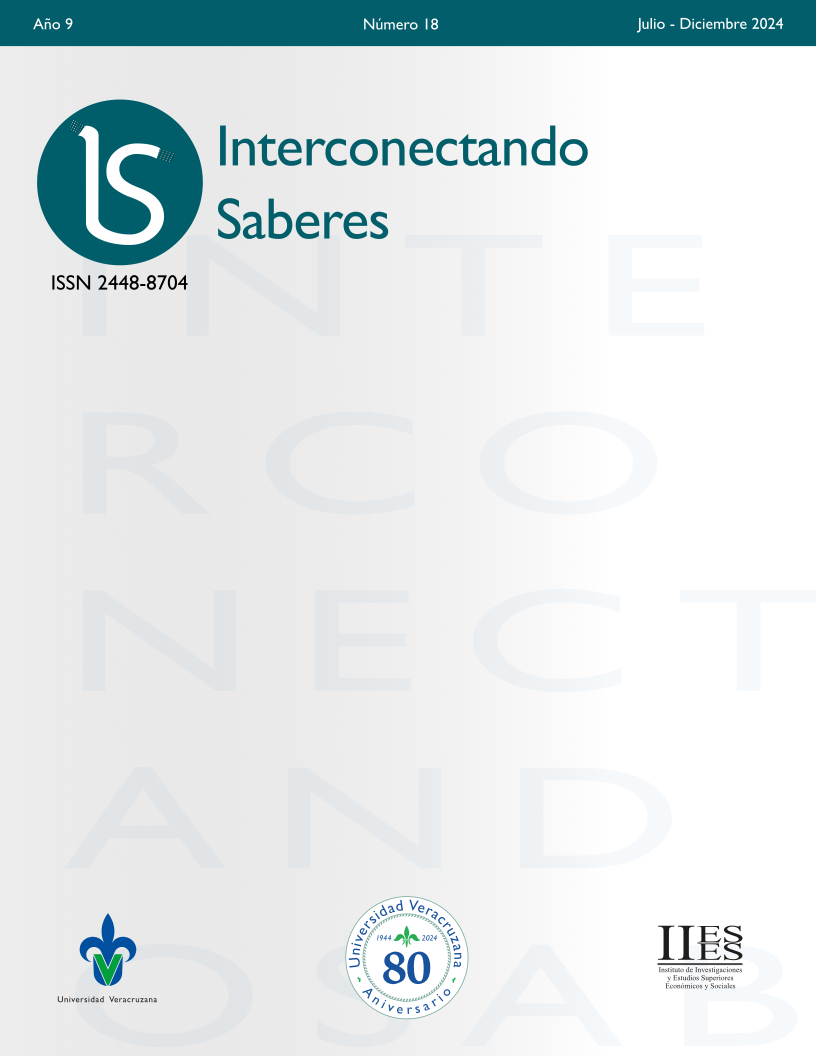Abstract
This text is an approach to a contextual reality; explores the dynamics of the work -in situ- carried out in the Centros Comunitarios of the Municipality of Xalapa, Veracruz, from the experience of its main actors, the citizens. We wonder about the impact that the community work of these Centers has, from the perspective of the citizens who experience it. We envision a citizenry that is involved in a process that revitalizes their talents, the development of their capabilities and the proactive attitudes that affect their personal well-being as a collective. We support our vision from the contributions of Maturan’s Biology of Knowledge and Biology of Love. We conclude that the territory offers opportunities for human flourishing, from shared responsibility, the transfer of knowledge and the development of skills for a new, healthier and more peaceful life.
References
Assmann, H. (2002). Placer y ternura en la educación. Editorial Narcea.
Bohm, D. (1997). Sobre el diálogo. Editorial Kairós.
Capel, H. (2016). Las ciencias sociales y el estudio del territorio. Biblio3W. Revista Bibliográfica de Geografía y Ciencias Sociales, 21, artículo 1.149, 1-38. https://www.ub.edu/geocrit/b3w-1149.pdf
Dirección de Desarrollo Social. (2022). Políticas de desarrollo social 2022-2025. H. Ayuntamiento de Xalapa, Veracruz.
Freire, P. (2003). El grito manso. Siglo XXI.
Gaceta Oficial del Estado de Veracruz. (2022, febrero). Capítulo XVI BIS, Art. 54 bis, 54 ter, 54 quater. Órgano del Gobierno del Estado de Veracruz de Ignacio de la Llave.
González, M. V. (2020). Teoría del trabajo social comunitario. Universidad Nacional Autónoma de México, Escuela Nacional de Trabajo Social.
Instituto Nacional de Estadística y Geografía (INEGI). (2020). Censo de población, Xalapa, Veracruz.
Lillo, N., & Roselló, E. (2004). Manual para el trabajo social comunitario. Editorial Narcea.
Maturana, H. (1993). Amor y juego: Fundamentos olvidados de lo humano. Dolmen Ediciones.
Maturana, H. (1995). La realidad ¿objetiva o construida? I. Fundamentos biológicos de la realidad. II Fundamentos biológicos del conocimiento. Anthropos en coedición con la Universidad Iberoamericana e ITESO.
Maturana, H. (2002). Transformación en la convivencia. Ediciones Dolmen.
Maturana, H., & Varela, F. (2004). El árbol del conocimiento: Las bases biológicas del entendimiento humano. Lumen, Editorial Universitaria.
Navarro, S. (2004). Redes sociales y construcción comunitaria: Creando contextos para una acción social ecológica. Colección Intervención Social, Editorial CCS.
Rifkin, J. (2010). La civilización empática: La carrera hacia una conciencia global en un mundo en crisis. Editorial Paidós.
Taylor, S. J., & Bogdan, R. (1984). Introducción a los métodos cualitativos de investigación. Paidós.

This work is licensed under a Creative Commons Attribution-NonCommercial-NoDerivatives 4.0 International License.
Copyright (c) 2024 Joaquin Rojas Molina


